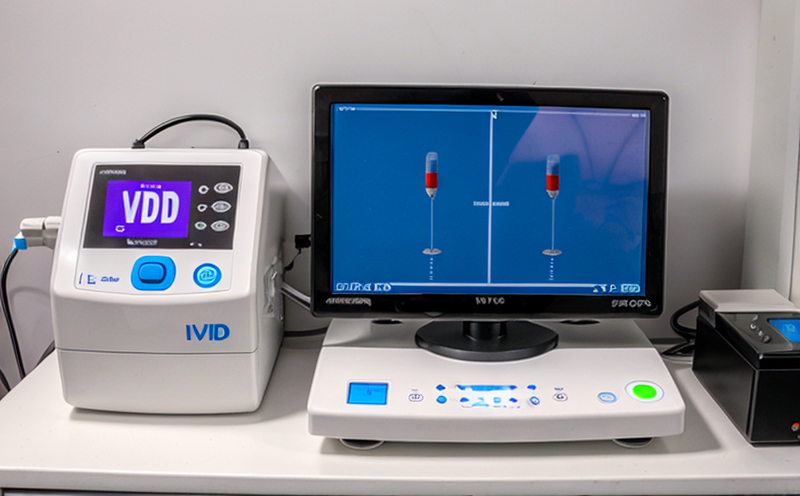Limit of Detection LoD Testing in IVD Devices
The limit of detection (LoD) is a critical performance metric for any In Vitro Diagnostic (IVD) device. It represents the lowest concentration of analyte that can be detected with a specified probability of correct identification, typically 95%. This test ensures that an IVD device can accurately detect the presence of a disease or condition at its earliest stages, which is paramount in timely diagnosis and treatment.
The LoD testing process involves several steps, including the preparation of calibration standards, patient samples, and controls. Calibration solutions are prepared at various concentrations to establish the relationship between the signal generated by the device and the actual concentration of analyte in the sample. Patient specimens must be representative of those expected in clinical use.
The testing apparatus used for LoD determination can vary based on the type of IVD, but it typically includes highly sensitive analytical instruments such as mass spectrometers or capillary electrophoresis systems. The method also requires a control sample with known analyte concentration to validate the accuracy and precision of the device.
The process begins by running the calibration standards through the instrument to establish the working curve, which is used to interpret subsequent results from patient samples. Next, the LoD is determined using multiple replicates of the lowest calibration standard or a control sample with known analyte concentration. The test must demonstrate that 95% of measurements fall within an acceptable range.
The significance of this testing cannot be overstated in medical diagnostics. Accurate LoD ensures patient safety by avoiding false negatives, which can delay critical treatment and lead to adverse health outcomes. It also supports regulatory compliance and enhances the reputation of manufacturers in the industry.
Understanding the limitations of your device is crucial for effective LoD testing. For instance, factors like sample variability, instrument precision, and reagent stability can impact test results. Proper calibration and validation are essential to ensure reliable performance across different batches of samples and over time.
| Parameter | Description |
|---|---|
| Calibration Standards | Prepared at various concentrations to establish the relationship between the signal generated by the device and the actual concentration of analyte in the sample. |
| Patient Specimens | Representative of those expected in clinical use for accurate testing. |
| Instrumentation | Highly sensitive analytical instruments such as mass spectrometers or capillary electrophoresis systems. |
| Replicates | Used to validate the accuracy and precision of the device. |
Given these complexities, it's essential for manufacturers to partner with a reputable laboratory that specializes in this type of testing. Our team ensures that every step from sample preparation to result interpretation adheres strictly to international standards such as ISO 17025 and IEC 60601.
Why It Matters
The importance of LoD testing cannot be overstated in the context of medical diagnostics. Accurate LoD ensures that patients receive timely and appropriate treatment, which is critical for managing chronic conditions or preventing complications from acute diseases.
- Reduces false negatives: Ensures that the device can detect even low concentrations of analytes, thus avoiding missed diagnoses.
- Enhances patient safety: By ensuring reliable detection, it minimizes the risk of adverse health outcomes due to delayed treatment.
- Sustains regulatory compliance: Adherence to LoD standards is a prerequisite for FDA and EMEA approvals, ensuring that devices meet strict quality control criteria.
- Improves public trust: Demonstrating consistent and accurate performance builds confidence in the reliability of diagnostic tests.
In essence, LoD testing plays a pivotal role in optimizing healthcare delivery. It ensures that medical professionals have access to robust tools that can accurately identify diseases at their earliest stages, thereby improving patient outcomes and overall public health.
Scope and Methodology
The scope of LoD testing encompasses several key elements that ensure the accuracy and reliability of In Vitro Diagnostic devices. This includes:
- Calibration standards preparation at various concentrations.
- Patient specimen collection and handling to reflect clinical scenarios accurately.
- Use of high-precision analytical instruments for consistent results.
- Determination of LoD using multiple replicates from the lowest calibration standard or control sample.
The methodology involves rigorous validation steps, including statistical analysis to ensure that 95% of measurements fall within an acceptable range. This ensures that the device can consistently detect analytes at their lowest detectable levels without false positives.
Our laboratory adheres strictly to international standards such as ISO 17025 and IEC 60601, ensuring that every test is conducted with precision and accuracy. We employ experienced technicians who are trained in the latest techniques and methodologies to ensure reliable results.





